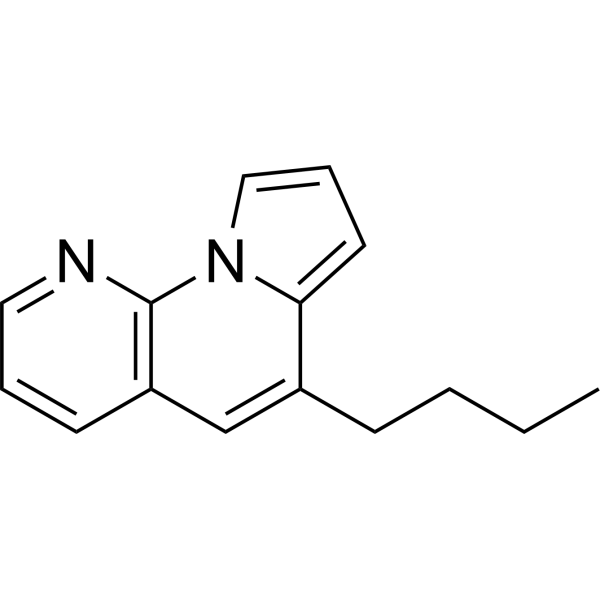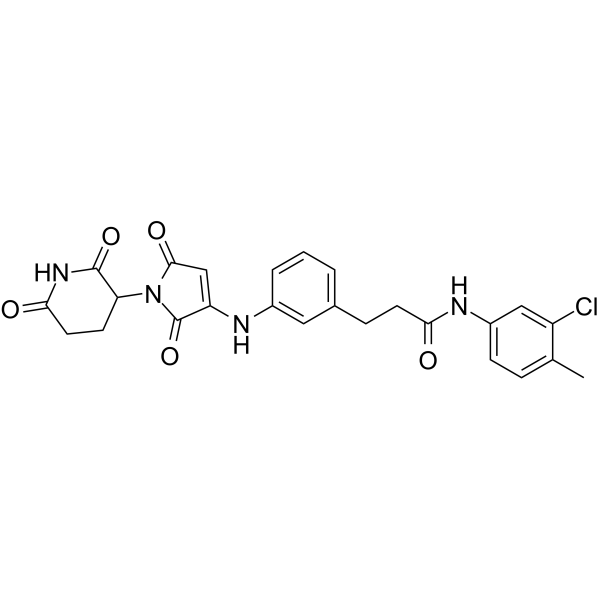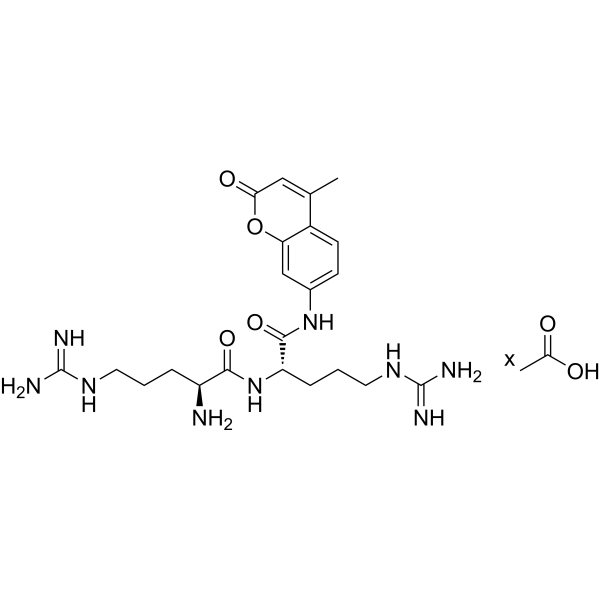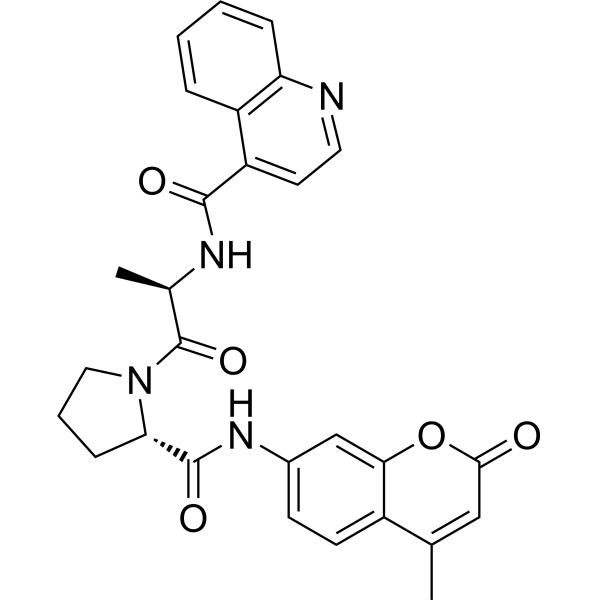Enzymes(酶)
Enzymes are very efficient and specific catalyst proteins which react with 1 or few types of substrates in biochemical reactions and are responsible for bringing about almost all of the chemical reactions in living organisms. Enzymes speed up reactions by providing an alternative reaction pathway of lower activation energy. Without enzymes, reactions take place at a rate far too slow for the pace of metabolism which means that they speed up the chemical reactions in living things.
There are 2 types of enzymes, ones that help join specific molecules together to form new molecules & others that help break specific molecules apart into separate molecules. Enzymes play many important roles ouside the cell as well. One of the best examples of this is the digestive system. For instance, it is enzymes in your digestive system that break food down in your digestive system break food down into small molecules that can be absorbed by the body. Some enzymes in your digestive system break down starch, some proteins and others break down fats. The enzymes used to digest our food are extra-cellular since they are located outside our cells & enzymes inside our cells are intra-cellular enzymes. Enzymes are used in ALL chemical reactions in living things; this includes respiration, photosynthesis, movement growth, getting rid of toxic chemicals in the liver and so on. Enzymes are proteins that must have the correct structure to be active. They are very easily affected by heat, pH and heavy metal ions.
Ribonucleoprotein enzyme catalytic activity is located in the protein part but for some the catalytic activity is in the RNA part. A catalyst is any substance which makes a chemical reaction go faster, without itself being changed. A catalyst can be used over and over again in a chemical reaction and does not get used up.
Enzymes lower the amount of activation energy needed by binding to the reactants of the reaction they catalyze, thus speed up the reaction and can process millions of molecules per second. Enzymes are typically large proteins with high molecular weight that permit reactions to go at conditions that the body can tolerate.
Enzyme nomenclature is based on what the enzyme reacts with & how it reacts along with the ending ase.
Enzymes must get over the activation energy hurdle.
Enzymes change how a reaction will proceed which reduces the activation energy and makes it faster. The more we increase the enzyme concentration the faster the reaction rate for non-catalyzed reactions. Enzymes that are catalyzed reactions also increase reaction rate at higher level of concentration but up to a certain point called Vmax which means that the enzyme has reached its maximum point. The reaction is limited by both the concentrations of the enzyme and substrate. Enzymes as catalysts take part in reactions which provide an alternative reaction pathway. Enzymes do not undergo permanent changes and remain unchanged at the end of the reaction. They only change the rate of reaction, not the position of the equilibrium.Enzymes as catalysts are highly selective by only catalysing specific reactions due to the shapes of the enzyme’s molecule.
Enzymes contain a globular protein part called apoenzyme and a non-protein part named cofactor or prosthetic group or metal-ion-activator. Changes in temperature and pH have great influence on the intra- and intermolecular bonds that hold the protein part in their secondary and tertiary structures.
Examples of cofactors are 1. Prosthetic group that are permanently bound to the enzyme. 2. Activator group which are cations (positively charged metal ions) & temporarily bind to the active site of the enzyme. 3.Coenzymes, usually vitamins or made from vitamins which are not permanently bound to the enzyme molecule, but combine with the enzyme-substrate complex temporarily. Enzymes require the presence cofactors before their catalytic activity can be exerted. This entire active complex is referred to as the holoenzyme.
Without enzymes, our guts would take weeks to digest our food, our muscles, nerves and bones would not work properly and so on…
Main Enzyme category groups:
Oxidoreductases:
All enzymes that catalyse oxido-reductions belong in this class. The substrate oxidized is regarded as a hydrogen or electron donor. The classification is based on 'donor:acceptor oxidoreductase'. The common name is 'dehydrogenase', wherever this is possible; as an alternative, 'acceptor reductase' can be used. 'Oxidase' is used only where O2 is an acceptor. Classification is difficult in some cases, because of the lack of specificity towards the acceptor.
Transferases:
Transferases are enzymes that transfer a group, for example, the methyl group or a glycosyl group, from one compound (generally regarded as donor) to another compound (generally regarded as acceptor). The classification is based on the scheme 'donor:acceptor grouptransferase'. The common names are normally formed as 'acceptor grouptransferase' or 'donor grouptransferase'. In many cases, the donor is a cofactor (coenzyme) that carries the group to be transferred. The aminotransferases constitute a special case.
Hydrolases:
These enzymes catalyse the hydrolysis of various bonds. Some of these enzymes pose problems because they have a very wide specificity, and it is not easy to decide if two preparations described by different authors are the same, or if they should be listed under different entries. While the systematic name always includes 'hydrolase', the common name is, in most cases, formed by the name of the substrate with the suffix -ase. It is understood that the name of the substrate with this suffix, and no other indicator, means a hydrolytic enzyme. It should be noted that peptidases have recommended names rather than common names.
Lyases:
Lyases are enzymes that cleave C-C, C-O, C-N and other bonds by means other than by hydrolysis or oxidation. They differ from other enzymes in that two (or more) substrates are involved in one reaction direction, but there is one compound fewer in the other direction. When acting on the single substrate, a molecule is eliminated and this generates either a new double bond or a new ring. The systematic name is formed according to 'substrate group-lyase'. In common names, expressions like decarboxylase, aldolase, etc. are used. 'Dehydratase' is used for those enzymes that eliminate water. In cases where the reverse reaction is the more important, or the only one to be demonstrated, 'synthase' may be used in the name.
Ligases:
Ligases are enzymes that catalyse the joining of two molecules with concomitant hydrolysis of the diphosphate bond in ATP or a similar triphosphate. 'Ligase' is often used for the common name, but, in a few cases, 'synthase' or 'carboxylase' is used. 'Synthetase' may be used in place of 'synthase' for enzymes in this class.
Products for Enzymes
- 41701(11)
- Activating Transcription Factor(3)
- Adenylate Kinase(10)
- AHCY(3)
- Aldolase(9)
- Asparaginase(5)
- Aurora Kinase(18)
- Beta Lactamase(3)
- Calcium and Integrin Binding(2)
- Calcium/Calmodulin-Dependent Protein Kinase(4)
- Carbonic Anhydrase(49)
- Casein Kinase(36)
- Cathepsin(52)
- Chitinase(5)
- Creatin Kinases(9)
- Cyclin(7)
- Cyclin-Dependent Kinase(18)
- Cyclophilin(23)
- Deaminase(14)
- Decarboxylase(12)
- Dehydrogenase(96)
- Discoidin Domain Receptor Tyrosine Kinase(2)
- DNA Polymerase(4)
- EGF Receptor(3)
- Endonuclease(6)
- Enolase(10)
- Enterokinase(5)
- Epimerase(3)
- Esterase(15)
- FGF Receptors(12)
- FK506 Binding Protein(10)
- Fructosamine 3 Kinase(2)
- Galactosidase(5)
- Glucosidase(32)
- Gluteradoxin(7)
- Glycogen synthase kinase(2)
- Glycosylase(10)
- Glyoxalase(3)
- Granzyme(7)
- Guanylate Kinase(2)
- Heparanase(2)
- Histone Deacetylase(3)
- Hydratase(10)
- Hydrolase(33)
- Hydroxylase(6)
- Isomerase(26)
- Jun N-terminal Kinase(1)
- Jun Proto-Oncogene(2)
- Kallikrein(26)
- Ligase(4)
- Lipase(14)
- Lipocalin(6)
- Lyase(9)
- LYVE1(3)
- Mitogen-Activated Protein Kinase(16)
- MMP(68)
- Mutase(11)
- Natural Enzymes(4)
- Nuclease(18)
- Nucleotidase(4)
- Nudix Type Motif(11)
- Other Enzymes(63)
- Oxidase(23)
- Oxygenase(12)
- Paraoxonase(3)
- Peptidase(41)
- Peroxiredoxin(10)
- Phosphatase(150)
- Phosphorylase(9)
- PI3-kinase(5)
- Polymerase(13)
- PPARG(2)
- Protease(15)
- Proteasome(54)
- Protein Kinase Akt1/PKB alpha(4)
- Protein Kinase-A(7)
- Protein Kinase-C(3)
- Protein Kinases(86)
- Protein Tyrosine Phosphatase(10)
- Reductase(60)
- Secreted Phospholipase A2(10)
- Serine Threonine Kinase(4)
- Sulfatase(8)
- Synthase(23)
- Synthetase(33)
- TGFBR(3)
- TGM2(3)
- TIMP(10)
- TPA(4)
- Transferase(156)
- Tyrosine Kinase(9)
- Ubiquitin Conjugating Enzyme(39)
- Uromodulin(4)
- VEGF Receptors(14)
- Transaminase(19)
- Hexokinase(6)
- TIE1(6)
- Cat.No. 产品名称 Information
-
GP21373
AKR1A1 Human
Aldo-Keto Reductase Family 1 Member A1 Human Recombinant

-
GP21374
AKR1B1 Human
Aldose Reductase Human Recombinant

-
GP21375
AKR1B1 Mouse
Aldose Reductase Mouse Recombinant

-
GP21376
AKR1B10 Human
Aldo-Keto Reductase Family 1 Member B10 Human Recombinant

-
GP21377
AKR1C1 Human
Aldo-Keto Reductase Family 1 Member C1 Human Recombinant

-
GP21378
AKR1C3 Human
Aldo-Keto Reductase Family 1 Member C3 Human Recombinant

-
GP21379
AKR1C4 Human
Aldo-Keto Reductase Family 1 Member C4 Human Recombinant

-
GP21381
AKR1D1 Human
Aldo-Keto Reductase Family 1 Member D1 Human Recombinant

-
GP21380
AKR1D1 Human, His
Aldo-Keto Reductase Family 1 Member D1 Human Recombinant, His Tag

-
GP21382
AKR7A2 Human
Aldo-Keto Reductase Family 7 Member A2 Human Recombinant

-
GP21383
AKR7A3 Human
Aldo-Keto Reductase Family 7 Member A3 Human Recombinant

-
GP22419
AKT1 Human
Protein Kinase B Alpha Human Recombinant

-
GP22420
AKT1 Human, Sf9
Protein Kinase B Alpha Human Recombinant, Sf9

-
GP26184
AKT3 Human
AKT3 Human Recombinant produced in HEK293 Cells is a single, glycosylated polypeptide chain containing 485 amino acids (1-479a

-
GP21384
ALAD Human
Aminolevulinate Dehydratase Human Recombinant

-
GP21385
ALDH1A1 Human
Aldehyde Dehydrogenase 1A1 Human Recombinant

-
GP21386
ALDH2 Human
醛脱氢酶人重组体

-
GP21387
ALDH2 Mouse
Aldehyde Dehydrogenase 2 Mouse Recombinant

-
GP21388
ALDH2 Mouse, Active
Aldehyde Dehydrogenase 2 Mouse Recombinant, Active

-
GP21389
ALDH3A1 Human
Aldehyde Dehydrogenase 3 Family Member A1 Human Recombinant

-
GP21390
ALDH5A1 Human
Aldehyde Dehydrogenase 5 A1 Human Recombinant

-
GP21391
ALDH6A1 Human
Aldehyde Dehydrogenase 6 A1 Human Recombinant

-
GP21392
ALDOA Human
Aldolase-A Human Recombinant

-
GP21393
ALDOB Human
Aldolase B Fructose-Bisphosphate Human Recombinant

-
GP21394
ALDOC Human
Aldolase C Fructose-Bisphosphate Human Recombinant

-
GP21396
ALDOC Human, Active
Aldolase C Fructose-Bisphosphate Human Recombinant, Active

-
GP21395
ALDOC Human, His
Aldolase C Fructose-Bisphosphate Human Recombinant, His Tag

-
GP21397
ALDOC Mouse
Aldolase C Fructose-Bisphosphate Mouse Recombinant

-
GP21429
Alkaline Phosphatase Bovine
Alkaline Phosphatase Bovine Intestinal

-
GP21398
ALKBH2 Human
ALKB Alkylation Repair Homolog 2 Human Recombinant

-
GC71420
ALP/Carbonic anhydrase-IN-1
ALP/Carbonic anhydrase-IN-1(化合物1e)是一种双碳酸酐酶(CA)和碱性磷酸酶(ALP)抑制剂。

-
GP21399
ALPL Mouse
Alkaline Phosphatase Liver/Bone/Kidney Mouse Recombinant

-
GC64638
ALV1
ALV1 是一种有效的 Ikaros 和 Helios 降解剂。ALV1 能显著降低 IKZF1-4、CK1α (酪蛋白激酶 1α,CSNK1A1) 和核糖体蛋白 RPL4 的蛋白丰度。ALV1 对和 IKZF1/2/3 表现出相似的降解活性。ALV1 诱导 Helios/CRBN 二聚反应。ALV1 在很大程度上促进了 IL-2 的分泌。

-
GP21400
AMD1 Human
Adenosylmethionine Decarboxylase 1 Human Recombinant

-
GP21401
Aminopeptidase
Aminopeptidase Aeromonas Recombinant

-
GP21402
AMPD2 Human
AMPD2 人类重组

-
GP21403
AMT Human
Aminomethyltransferase Human Recombinant

-
GC68656
Andecaliximab
Anti-MMP9 Reference Antibody (andecaliximab)
Andecaliximab 是一种靶向基质金属蛋白酶 9 (MMP9) 的重组 IgG4 单克隆抗体。Andecaliximab 在特发性肺纤维化小鼠模型中显示出抗纤维化疗效。Andecaliximab 可用于胃腺癌和特发性肺纤维化 (IPF) 的研究。
-
GP21404
Angiotensin
Angiotensin

-
GP26123
ANPEP Mouse
ANPEP Mouse produced in Sf9 Insect cells is a single, glycosylated polypeptide chain containing 943 amino acids (33-966 a

-
GP21405
ANSA E.coli
Cytoplasmic L-asparaginase I E.Coli Recombinant

-
GP26124
AOC3 Human
AOC3 Human produced in Sf9 Baculovirus cells is a single, glycosylated polypeptide chain containing 746 amino acids (27-763 aa) and having a molecular mass of 82

-
GP21406
APEX1 Human
APEX Nuclease-1 Human Recombinant

-
GP21407
APRT Human
Adenine Phosphoribosyltransferase Human Recombinant

-
GC74379
Arg-Arg-AMC acetate
Arg-Arg-AMC acetate是Arg-Arg-AMC的醋酸盐形式。

-
GP21408
ARG1 Human
Arginase, Liver Human Recombinant

-
GP26125
ARG1 Human, Active
ARG1 Human Recombinant produced in E

-
GP21409
ARG2 Human
Arginase Type II Human Recombinant

-
GC73863
ARI-3144
ARI-3144是成纤维细胞活化蛋白(FAP)的优良底物。

-
GC65098
ARL67156 triethylamine
FPL 67156 triethylamine
ARL67156 (FPL 67156) triethylamine 是一种 ecto-ATPase 抑制剂。ARL67156 triethylamine 是竞争性 NTPDase1 (CD39),NTPDase3 和 NPP1 抑制剂,Ki 分别为 11,18 和 12 μM。ARL67156 triethylamine 可用于钙化性主动脉瓣疾病、哮喘等疾病的研究。




